The College of Wooster
Wooster, OH, 2004
Wooster, OH, 2004
LTL’s work with the College of Wooster began in 2001 with an extensive feasibility study of the residential campus plan that culminated in recommendations for substantial changes in the density and configuration of several student halls. Contrary to the prevailing trend at residential colleges toward apartment-style living, extensive discussions with students, residential life staff, and college administration led to the unanticipated conclusion that a double-loaded corridor type actually encourages the greatest degree of socialization and the most positive student experiences. Urban where the apartment type is suburban, the spatial format of the corridor building facilitates exchange among students and provides opportunities for diverse levels of interaction. At a time when students arrive on campus with an increasing array of insulating personal technologies--ipods, computers, gameboys--this seemingly outmoded type offers a social mixing chamber for the cultivation of a collective collegial identity.
The success of the double-loaded corridor as a catalyst for college social life is predicated on several important conditions: 1) the scale of the hall unit--the total number of rooms served by a single corridor--should be neither too small nor too large, as this resulted either in isolation or institutional anonymity, 2) the corridor should be wide enough to function as an ad-hoc social space and connect to or incorporate other collective spaces, and 3) the corridor should be integrated with the main circulation paths through the building.
The success of the double-loaded corridor as a catalyst for college social life is predicated on several important conditions: 1) the scale of the hall unit--the total number of rooms served by a single corridor--should be neither too small nor too large, as this resulted either in isolation or institutional anonymity, 2) the corridor should be wide enough to function as an ad-hoc social space and connect to or incorporate other collective spaces, and 3) the corridor should be integrated with the main circulation paths through the building.
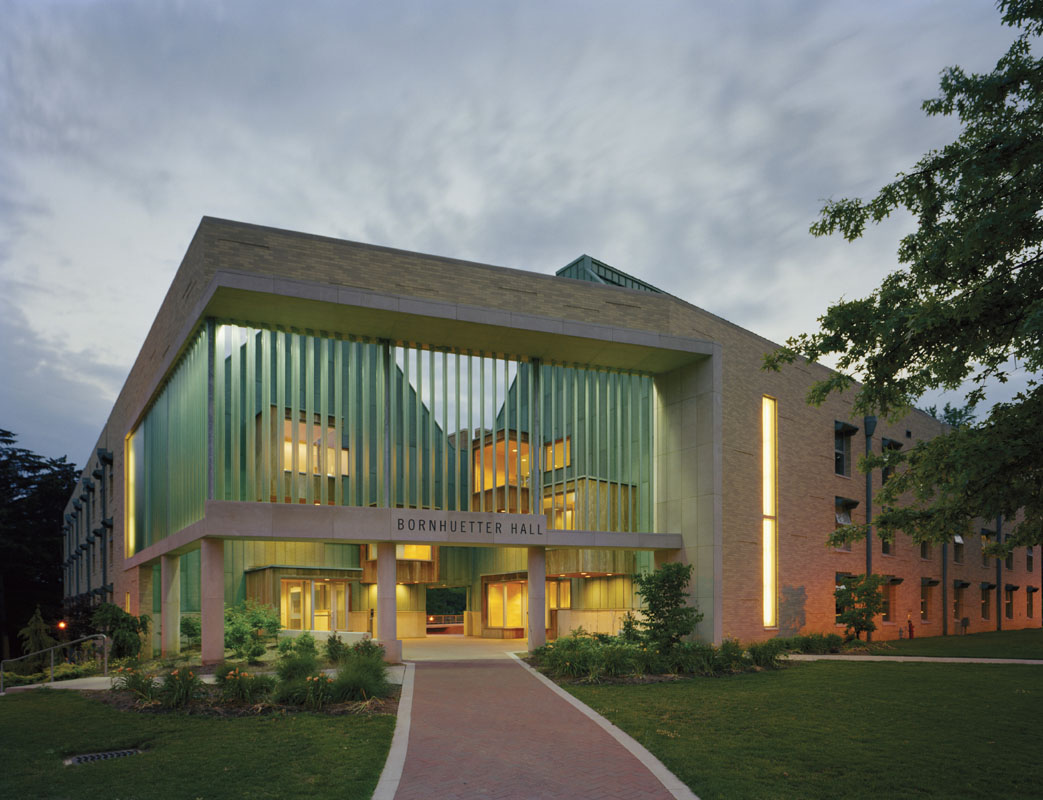
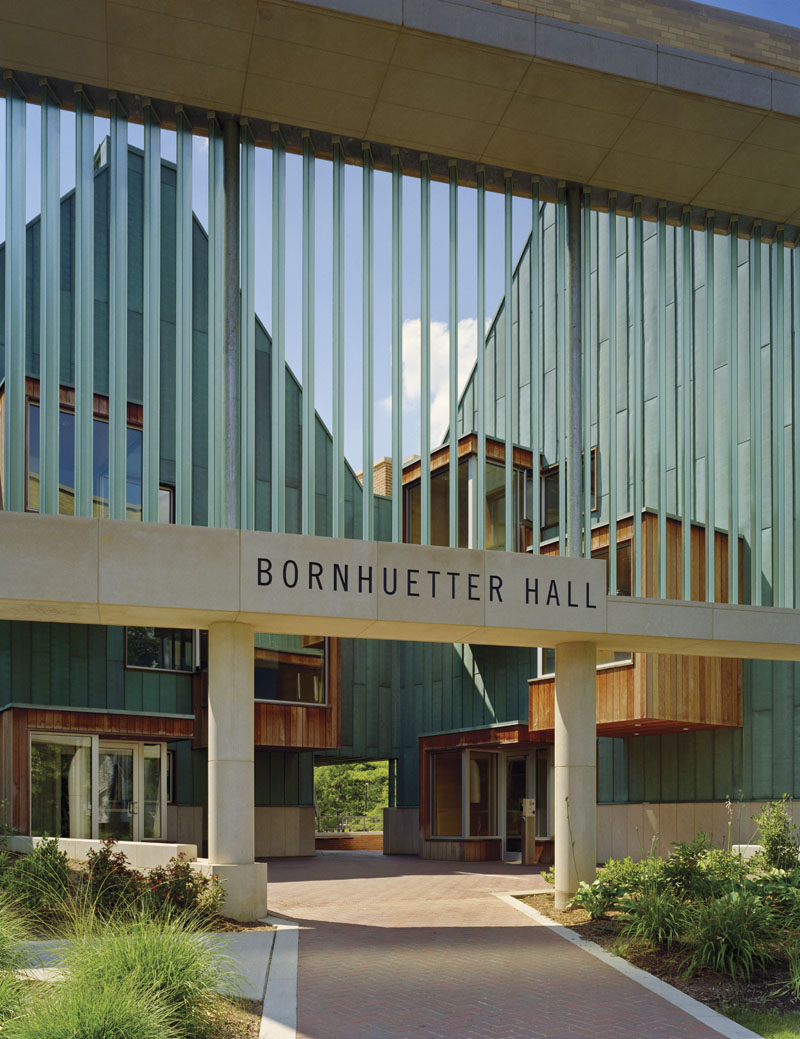
The residence hall is actually two buildings, which share a ground floor mechanical system. Within each wing, the hallways flare at their ends and embraces lounges, a kitchenette, and more intimate sitting areas. A collective outdoor courtyard is created by this split. This exterior room functions as the public center of the building. It is an unusual space, simultaneously at the heart of the building and at the ends of each wing. It contains both social and private spaces. It provides a sequence of entry into the building and passage through to a park framed at the rear of the building.
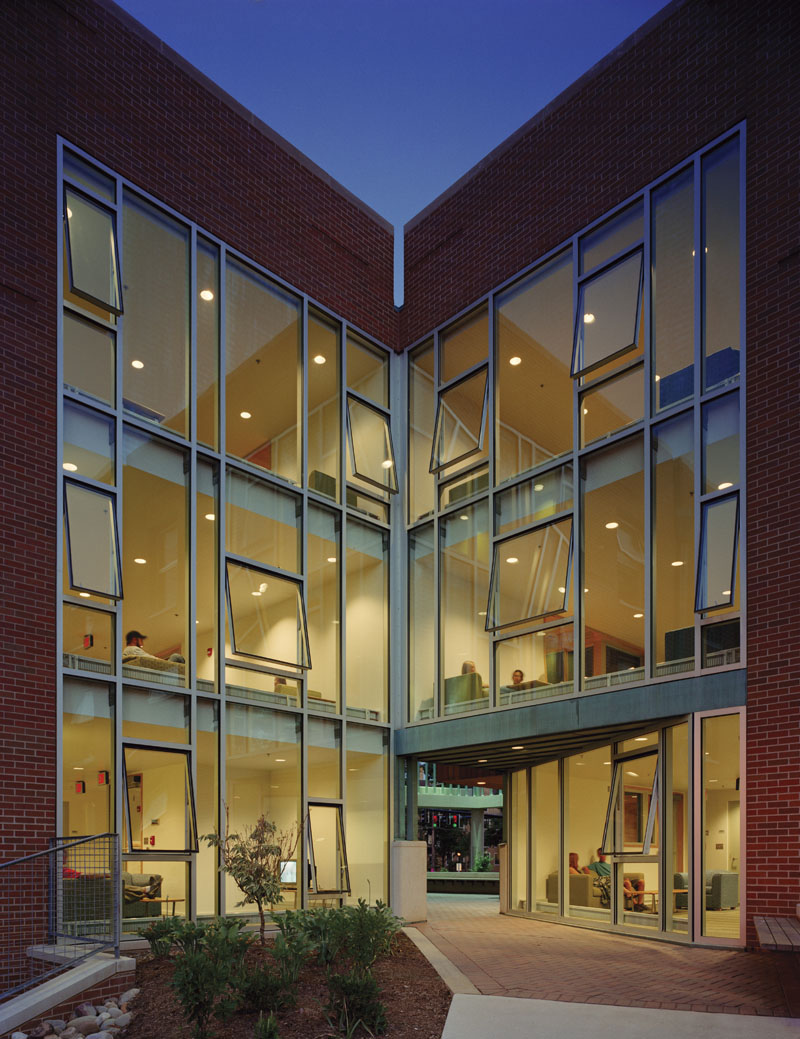
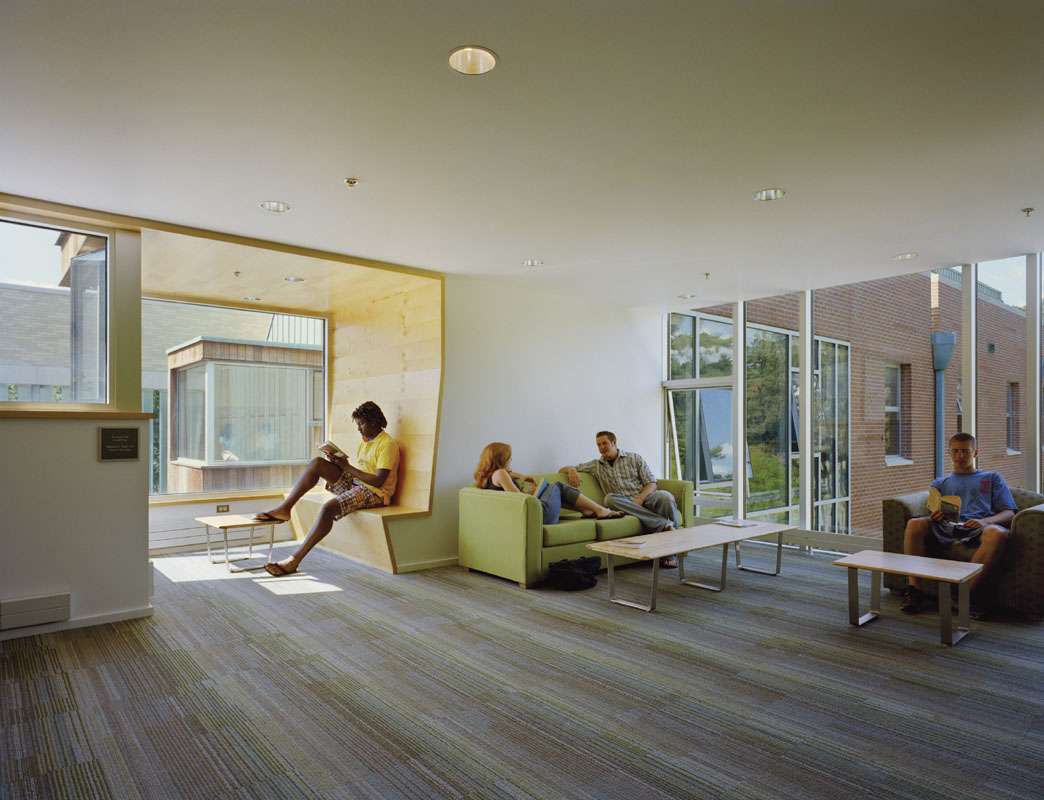
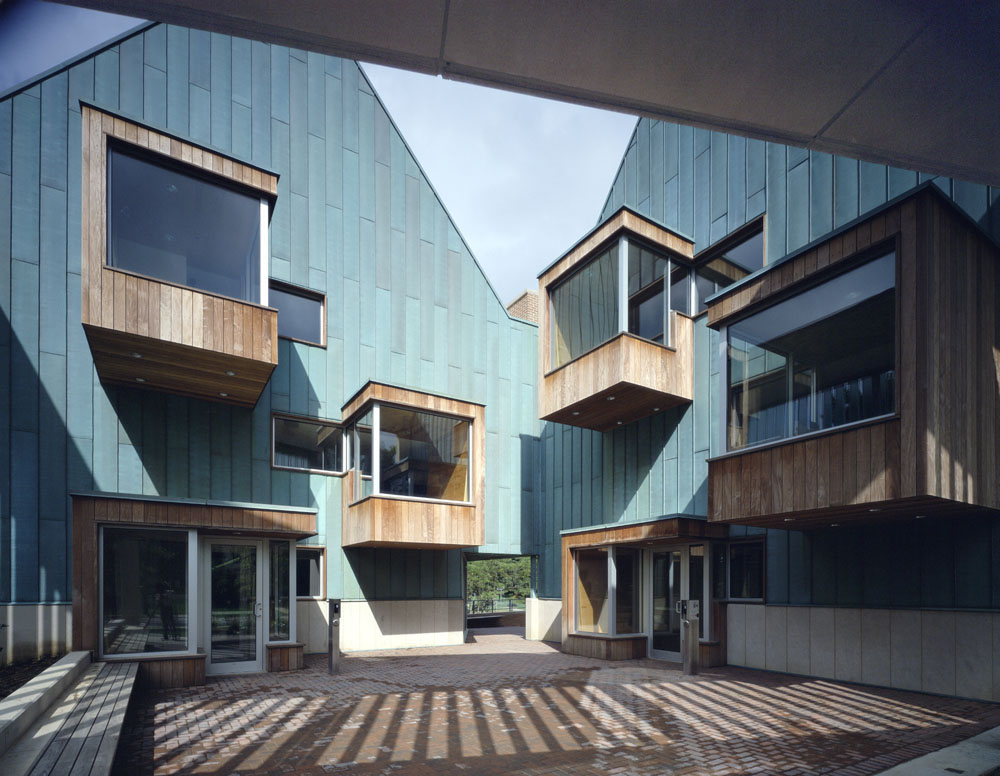
Wood-clad study nooks cantilever, like box seats, into the theatrical space of the courtyard, producing a dynamic entrance to the building and establishing private study areas in a collective setting. The daily activity of coming and going from the residence hall is turned into a public event.
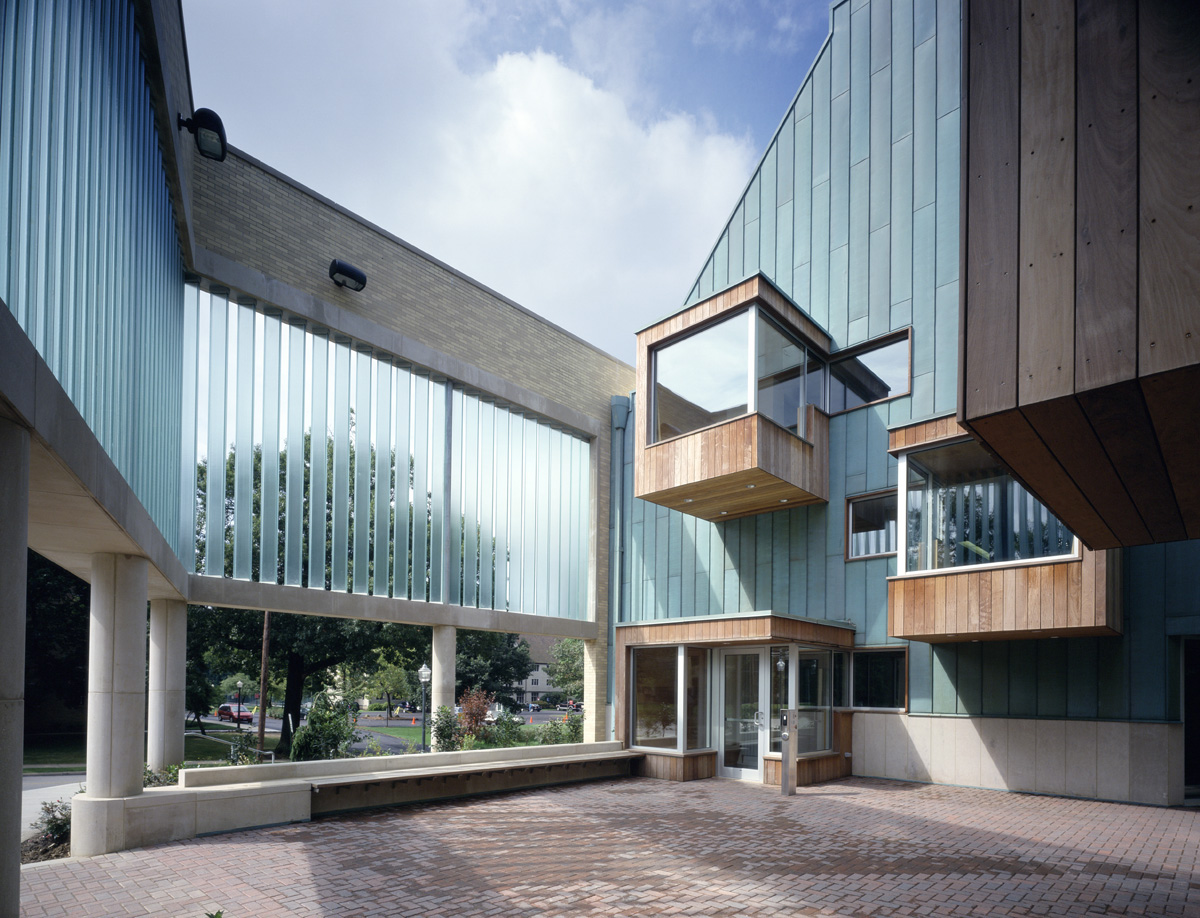
Project Credits
Bornhuetter Hall, 2001-4, Wooster, OH
Client: College of Wooster
Project team: Paul Lewis, Marc Tsurumaki, David J. Lewis; David Takacs, project architect; Hye-Young Chung, Carolynn Karp, Eric Samuels, Clement Valla, Stephanie Tuerk, Patri Vienravi
Construction manager: Bogner Construction Management Company
Structural engineer: Robert Silman Associates
Mechanical engineer: Point One Design
Photographer: Michael Moran, Rudolph Janu
Bornhuetter Hall, 2001-4, Wooster, OH
Client: College of Wooster
Project team: Paul Lewis, Marc Tsurumaki, David J. Lewis; David Takacs, project architect; Hye-Young Chung, Carolynn Karp, Eric Samuels, Clement Valla, Stephanie Tuerk, Patri Vienravi
Construction manager: Bogner Construction Management Company
Structural engineer: Robert Silman Associates
Mechanical engineer: Point One Design
Photographer: Michael Moran, Rudolph Janu

